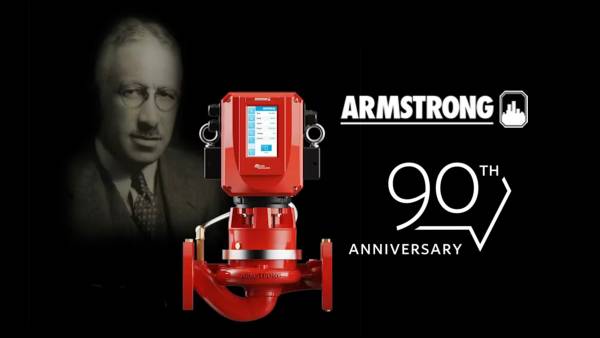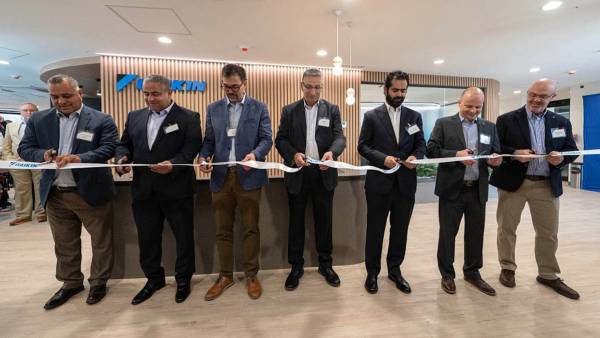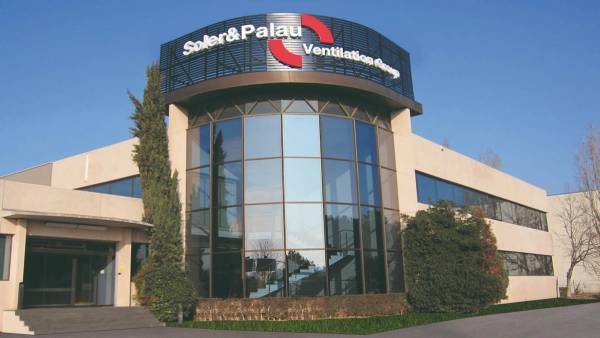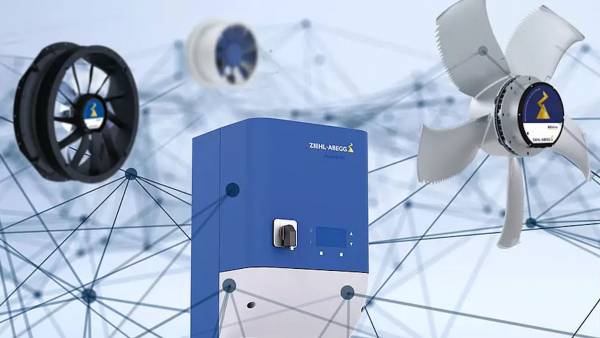 Recent studies have shown that proper fenestration and shading design and control, along with simultaneous control of electric lighting and HVAC components, could significantly reduce the high cooling load and energy consumption for lighting and cooling, while retaining good internal conditions both thermal and lighting.
Recent studies have shown that proper fenestration and shading design and control, along with simultaneous control of electric lighting and HVAC components, could significantly reduce the high cooling load and energy consumption for lighting and cooling, while retaining good internal conditions both thermal and lighting. by Thanos Tzempelikos,
M.A.Sc., Ph.D.
Guided by technological advances in transparent building facades and the general motivation for high-quality green buildings, design alternatives have shifted to the use of dynamic fenestration and shading systems for optimal control of daylight and solar gains. The concept of dynamic facades (installation of controllable elements on the roof of the building) is not new; however, it is only in recent years that architects and engineers have begun to rely on these systems and use them in buildings.
Dynamic building roofs include advanced advantage technologies, innovative fenestration systems and automated shading control, which characterizes the new generation of "smart" buildings (along with efficient HVAC control systems). Although it is a great idea, the design and implementation of such systems represents a very complex task.
Each building requires a different design method, depending on the type of use, climate, orientation and transparency. During the initial design stage, the building design team has to choose from a wide variety of design options, for many of which assessing their impact on building performance could be difficult (especially for innovative technologies).
Inevitably, the selection of final design solutions usually includes many subjective factors. The fragmented nature of the building process, in which no member of the design team considers the overall optimization of the internal environment, is also part of the problem; therefore, traditional passive designs are those that are generally recommended as a traditional "safe" solution at the final stage.
The advantages of dynamic elements on the roof of the building are obvious; for example, brightness can be efficiently controlled if automated shading is used in perimeter areas. Roller curtains move automatically in order to block direct sunlight and allow the diffusion of light into the room, thus eliminating brightness and creating a pleasant luminous environment; horizontal (Venetian) closure plates redirect natural daylight into the interior of the space and improve light uniformity, even in open-plan offices; Automated operation windows allow natural ventilation to reduce overheating and provide fresh air in the building.
In reality, the design of a dynamic façade equipped with everything mentioned above is complicated and does not allow every building to be designed in this way. The performance of the building roof relates to different aspects of building operations (heating, cooling, lighting) and human comfort (thermal and visual). Consequently, an integrated method must be followed from the beginning of the design stage to achieve optimal results, with architects, engineers and consultants specialized for building energy presenting ideas during the design process.
Recent studies have shown that proper fenestration and shading design and control, along with simultaneous control of electric lighting and HVAC components, could significantly reduce the high cooling load and energy consumption for lighting and cooling, while retaining good internal conditions both thermal and lighting.
Regarding the benefits of automated building roof components, there are some basic drawbacks. In office and institutional buildings, designers have to face the problem of brightness protection first and foremost. That means the curtains would have to be closed to prevent direct rays from falling on the occupants (this would also prevent overheating).
If the buildings are not automated, each person sitting near the window must open and close the curtain, which would not contribute to reducing energy consumption by cooling/lighting since it is a subjective and random process. It has been observed that at least 30% of people would leave the curtains closed during dark days (minimizing the useful transmission of daylight) and leave them open during clear days (increasing the demand for cooling).
And what happens when there is no one in the room (lunch hours, weekends, etc.)? Automated operation can solve all these problems without compromising comfort (with proper control). Individual needs can also be met with priority manual control.
But then the question arises: what should be the properties of curtains? We still want natural daylight in space and to be able to see out; therefore the curtain should allow some kind of daylight (diffuse), but at the same time it should block sunlight; in the end, a balance is made between the positive and negative effects of solar radiation (and daylight).
We now know that curtains with a transmittance greater than 5% safely cause brightness in very clear sky conditions; that is, that 5% is generally a recommended value; however, the color of the curtain affects the view to the outside and the heat absorbed from the sun. Dark colors allow for a better view, but absorb more, so they will increase the air temperature. In other words, the color of the curtain could improve visual comfort, but it could also increase thermal discomfort.
There are also solutions to this problem. The fabric could be dark on the inner surface and could be light on the outside (thus reflecting outward rather than absorbing). In addition, of course, the possibility of horizontal closing plates (blinds) that automatically rotate according to the position of the sun, can ensure optimal performance (however, this system has to be carefully designed). The location of the shading device is important: external devices surpass in operation any internal device, but usually the curtains are located internally for aesthetic and maintenance reasons.
Controls after design
When the work of designing and shading control has been solved (at least partially at the beginning of the design stage), there are still many things that can be done. The evolution of lighting controls now enable cost effectiveness and efficient automated light reducers (or switches). Lights will be turned off (or reduced to a minimum level) when there is sufficient daylight in the space and will be controlled when electric lighting is needed.
Occupancy sensors will ensure that no extra power is consumed when no one is in the room. Light sensors are currently equipped with sophisticated control algorithms, which only require two or three sensors per building façade. The lights can also be controlled based on the type of task and the user's preferences.
Currently, it is just a matter of integrating the lighting control operation with automated shading to achieve the best possible performance. How can this be done? Taking into account the control of shading and lighting, "total lighting system", as an integral part of the design of the roof (and the perimeter area) from the beginning of the design stage. The curtains will respond to constant changes in external conditions and the lights will therefore be reduced (not necessarily as a separate system but depending on the properties of shading, position and control). This may sound simple but there is required to be some kind of intercom between the two systems (and we already have the technology currently).
The last part of the integration of the dynamic facades with the other systems of the building relates to the HVAC system. The impact of shading and lighting control on HVAC system control and design has two parts: (i) reducing the size of the cooler to achieve effective shading, and thus reducing the cost of capital, and (ii) reducing cooling energy consumption to achieve lower internal gains (lights) and solar gains (shading). These two points should be an essential part of the start of the design stage, as this is when the important decisions need to be made.
Except for the reduction of the system size, dynamic and appropriate temperature control in the perimeter areas (taking into account shading and lighting control) could significantly reduce energy consumption. Other dynamic roof options such as operable windows for natural ventilation are also important and need to be taken into account when designing a façade and the requirements of the mechanical system.
Working on projects with dynamic façade technologies has shown that, for an average-sized building (10-15 floors, 50 thousand square feet) with glass facades, energy savings from cooling due to automated control of shading and lighting could reach 40%, while lighting energy consumption can be reduced by more than 60%, compared to a passive cover design. The maximum cooling load can also be reduced by between 20 and 40%. This makes dynamic roofing technologies very attractive, as they contribute to the reduction in energy demands, reduction in greenhouse gas emissions, and offer healthier environments in buildings.
* Thanos Tzempelikos, M.A.Sc., Ph.D., ([email protected]) is an independent façade energy consultant and a researcher with the Solar Building Research Network (www.solarbuildings.ca). For the past five years, he has been conducting research and working on projects related to the optimization of perimeter zones and the design of integrated buildings (dynamic facades, daylight, shading, design, control and integration with electric lighting systems and HVAC components).
























Leave your comment